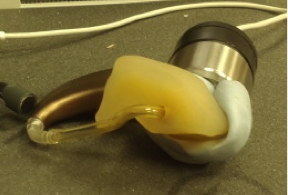Question
I heard there was a new standard RECD per ANSI. What does this mean for my measurements in the clinic?
Answer
ANSI S3.46-1997
The 1997 ANSI standard for real ear measurement (S3.46 1997) was the first to standardize real ear measurement terminology, such as Real Ear Aided Response (REAR) and many others we use today (see review by Pumford & Sinclair, 2001). The Real-Ear to Coupler Difference (RECD) was mentioned in this standard, however, it was in an appendix and not formally standardized.
ANSI S3.46-2013 and Standard RECD
The new ANSI standard for real ear measurement (S3.46-2013) is the first in North America to standardize the RECD. Of the various ways we measure the RECD in the clinic, only one is considered the standard form according to S3.46-2013. Like all RECD measurements, it is calculated as the difference between the response in the ear and the response in the coupler, for the same signal. However, in ANSI S3.46, the definition is a bit more specific: the coupler must be the HA1 coupler, the test signal must come from a high-impedance source transducer, and the same earpiece (either a foam tip or an earmold) must be used for both the ear measurement and the coupler measurement.
How does this new RECD standard apply to fitting a hearing aid with an earmold? If the earmold is used for the on-ear response and also for the coupler response, the earmold tubing effects will be cancelled out. Therefore, conceptually, the standard RECD accounts for the acoustic properties of the ear cavity itself and is not necessarily designed or intended to include earmold plumbing effects.
This is a new concept for many pediatric audiologists, because we are used to thinking about the RECD measurement as one that will account for the acoustical effects of a child’s earmolds, and we want to include that factor in the hearing aid verification process. So that is one issue that we wanted to consider in developing the new RECD protocols.

Figure 1. BTE with earmold attached to HA1 coupler using putty.
To measure this standard RECD, we have to have a way to attach the earmold to the HA1 coupler, and in this case we have used putty (see Figure 1). Putty presents some practical challenges. For example, some earmold materials do not stick to putty. In addition, for infection control purposes, the earmold must be disinfected prior to each use of putty, or the putty must be changed from person to person (Adkins, 2014; Kemp & Bankaitis, 2000). These are just a few of the challenges we encountered in trying to measure the new standard RECD.
Thankfully, although the new ANSI standard advises using only the HA1 coupler, conversions between the HA1 and HA2 couplers are simple, well-understood, and easily transformed by software.
For earmold RECDs, the standard calls for the earmold to be attached to the HA1 coupler, and while there are good reasons for that in the evidence, it does present some practical issues, mentioned above. Therefore, when measuring the coupler portion of the RECD, the HA2 coupler can be used, along with an HA1 to HA2 transform “under the hood” in the software that corrects between the two couplers. This has advantages when it comes to clinical ease of use because no putty is needed. As a result, there are fewer infection control issues, and you have a faster, more reliable connection to the coupler. There are also advantages when it comes to standardization; the standard HA1 RECD can be constructed and reported in the software even though you didn’t measure it that way.
A more detailed explanation of the reasons for this new standard as well as solutions for measuring the new standard RECD are presented in the course New RECDs and a New ANSI Standard: Revisiting RECD Basics and Applications.
It should be noted that ANSI S3.46-2013 is not wholly dedicated to RECD. Although this new definition of the RECD is getting a lot of attention, bear in mind that this standard is actually an update of a Real Ear measurement standard that was originally issued in 1997. There is a lot of good information in this standard on real ear measurement including the definitions of other real ear measures, information about test signals, information about room acoustics for making high-quality real ear measurements, and information about transforms including the RECD.
For more information, refer to the course, New RECDs and a New ANSI Standard: Revisiting RECD Basics and Applications, that is available in both recorded webinar and text formats.
References
Adkins, C. (2014). Infection control in audiology. Retrieved from: https://prezi.com/w1eitoiu62z1/infection-control-in-audiology/
American National Standards Institute (1997). S3.46-1997, Methods of measurement of real-ear performance characteristics of hearing aids.
American National Standards Institute (2013). S3.46-2013, Methods of measurement of real-ear performance characteristics of hearing aids.
Kemp, R.J., & Bankaitis, A.U. (2000). Infection control in audiology. AudiologyOnline, Article 1299. Retrieved from: https://www.audiologyonline.com
Pumford, J., & Sinclair, S. (2001). Real-ear measurement: Basic Terminology and Procedures. AudiologyOnline, Article 1229. Retrieved from: https://www.audiologyonline.com

